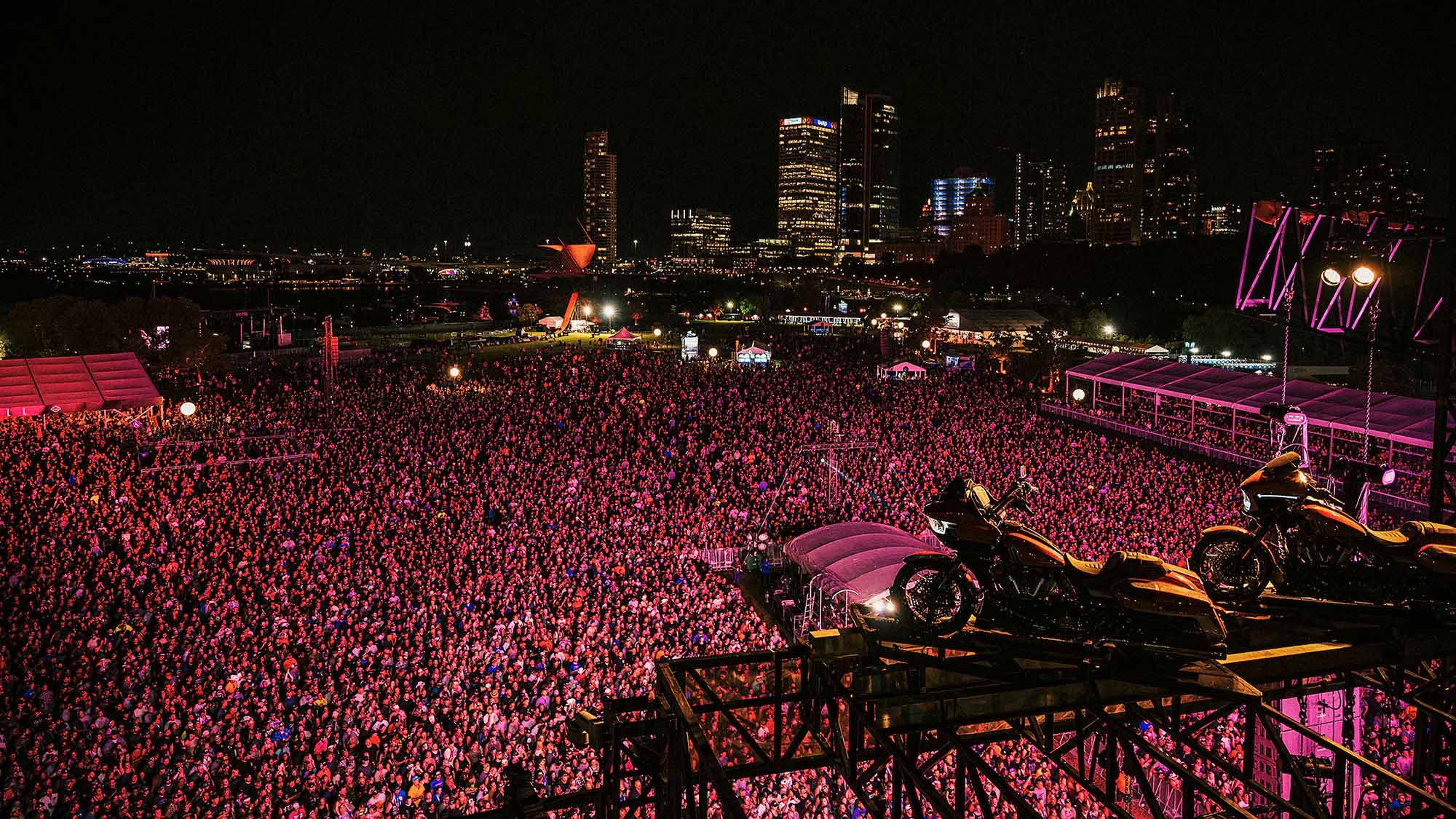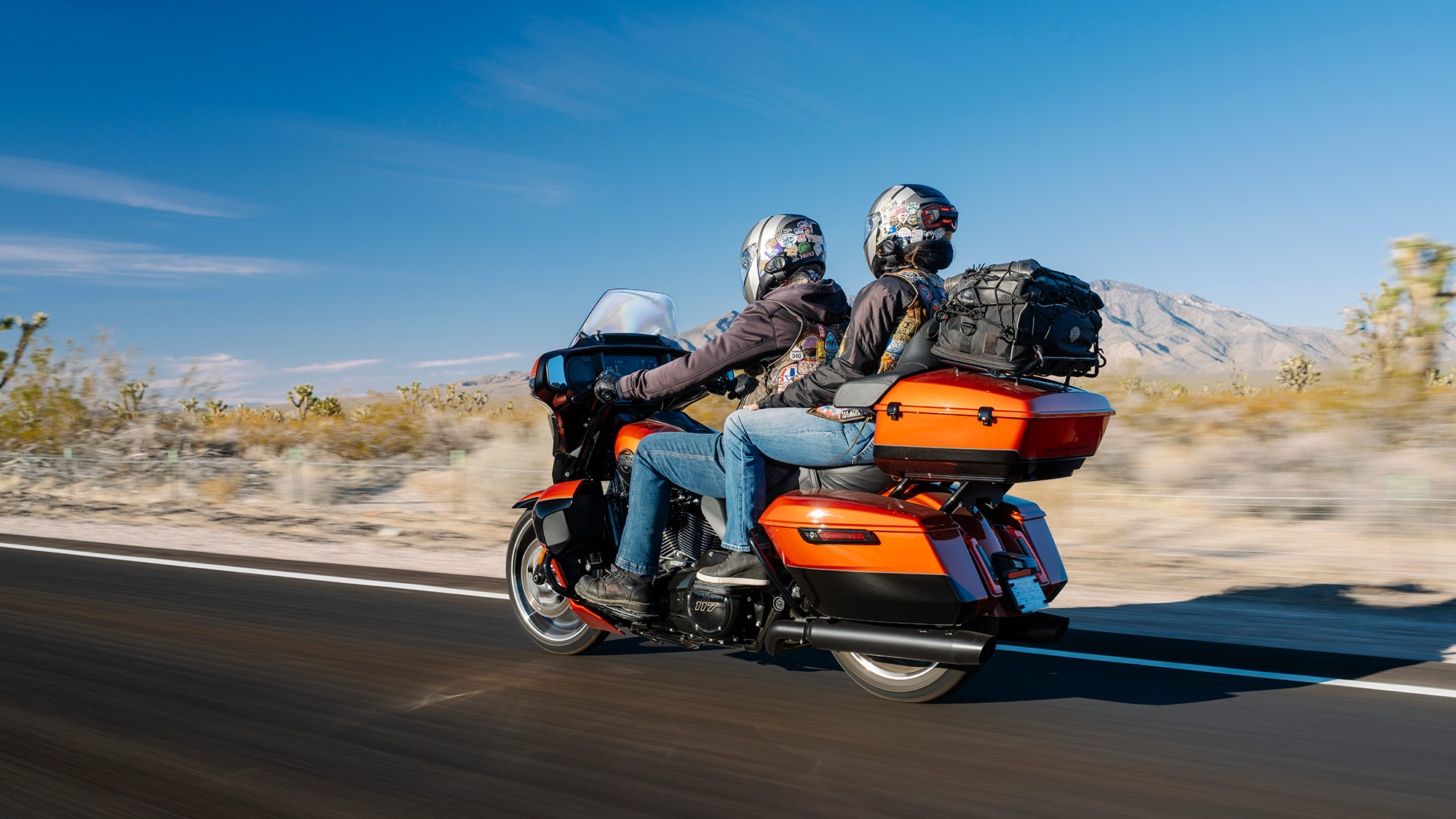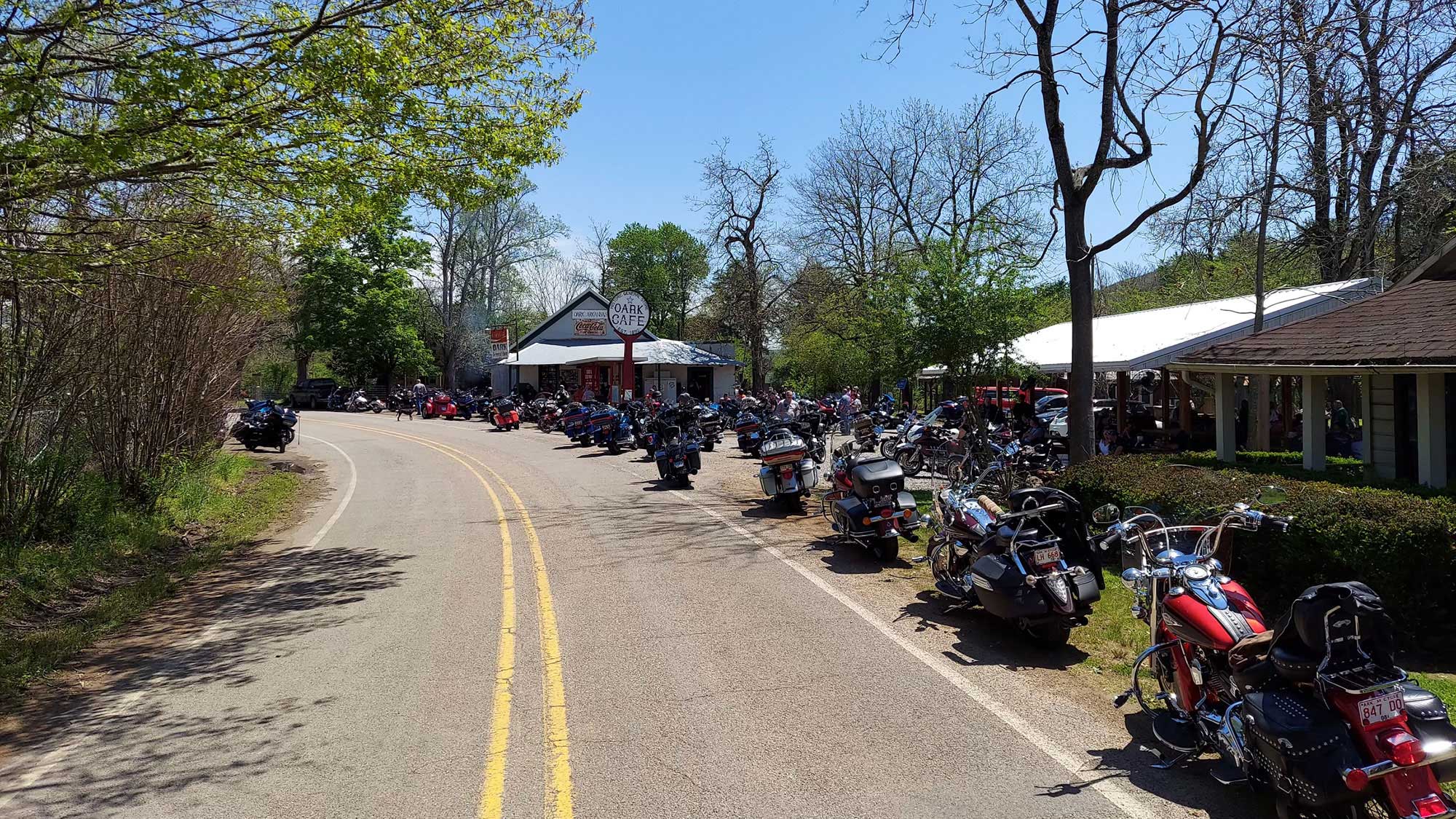
MIND OVER MATTER
Mental skills are just as important in motorcycle riding as physical skills, says Ray Petry of the Harley-Davidson® Riding Academy – here are some tips for mastering them
WORDS BY RAY PETRY
The mental skills involved in riding a motorcycle are as important as the physical skills in my opinion – and 40 years of safe riding is what informs my opinion. Yet those mental skills are rarely celebrated as much as the physical.
You can see demonstrations of physical riding skills everywhere you look. That’s understandable when you consider nobody would sit in the bleachers watching a ‘mental skills of motorcycling’ competition; yet those mental skills are way more impressive to me than physical skills. Bragging about your ability to react to a situation with a physical skill versus outwitting calamity with a mental skill is like telling someone you’re an expert at almost crashing. Using a superior strategy is the hallmark of an exceptional rider, and that means avoiding a crash by thinking ahead rather than having to resort to physical expertise.
Let me share a story to illustrate this better. In 1972, I was a stir-crazy nine-year-old trying to make friends in a rural neighbourhood my parents had recently moved to. The closest neighbour was half a mile away, and making friends was proving to be impossible especially since every kid my age had a dirt bike and I didn’t. After petitioning my parents to the end of their patience, they reluctantly gave me my first motorcycle: a 50cc trail bike. With the bike came a red metal-flake helmet – and a warning from my mum: “If I ever see you on the bike without the helmet, the bike is gone.” That’s a rule I still follow today, despite my mum’s passing over 16 years ago. That motorcycle was freedom and friendship, experiences I’ve never forgotten and wouldn’t trade away for anything.
Using a superior strategy is the hallmark of an exceptional rider
What does all this have to do with riding proficiently? A lesson I learned the hard way. You see, I learned how to ride that little motorcycle and jump it, slide it, wheely it and everything else you can think of. Despite the strict NO STREET MOTORCYCLES rule in my household, I upgraded to a street motorcycle shortly before turning 17. This caused an uproar, but that’s another story! Back to 17-year-old Ray… I was convinced I knew everything and reasoned that my most amazing dirt bike skills would carry me on the street. Boy, was I wrong! Not only did I not know everything, I also learned a very hard lesson. One day while zipping through an intersection at a very high rate of speed on my motorcycle, I turned down the cross street as a car was also beginning to make the turn. I only had time to say “NO!” out loud in my helmet before I collided with the steel bumper of the ’70s Chevy Nova. The front forks folded under, and the Nova hit me hard on the left leg as it slowed to a stop, pinning me under the car and against my motorcycle. I can still feel the bite of the steel bumper on my leg some 40 years later. My motorcycle was destroyed, but I walked away a very lucky young man with only bruises and a massive contusion on my left thigh. At the time, the police cited the car driver for turning across my right-of-way; the classic ‘did not see him, left turn in front of a motorcycle’ accident.
Fast-forward to the following spring when a friend who was buying a new motorcycle offered me his well-used bike for free but with one condition: he insisted I take a motorcycle safety course. I resisted a lot at first but eventually took the course. It was in the back of that classroom I figured it all out. My crash had a lot to do with me. I was riding way faster than the speed limit, through the most dangerous area for motorcycles – an intersection – assuming I had the right-of-way. The poor kid in the Nova never had a chance to see me coming, and technically I hit him. What I learned was that motorcycle riders have equal responsibility to share the road; and with having the most at stake, a larger responsibility to themself and their passenger. The responsibility is to give other drivers the time and space to account for you. That is, ride at or below the speed limit, and position yourself in a lane so you’re not hidden from oncoming traffic. This gives others a chance to see you and process what they’re seeing.
I start every motorcycle ride with a simple thought: my number one goal is to arrive at my destination safely. Think about it: with the overriding goal of getting there safely, everything gets reprioritised. The first thing to reprioritise is ‘being in the right’. With this mindset, regardless of right-of-way, getting through the intersection or curve or whatever is suddenly quite a different challenge. Without the rule of right-of-way, without the expectation your lane will remain unimpeded, without assuming the car at the intersection won’t pull out on you or the car next to you won’t change lanes on you, it suddenly empowers you as the rider to make up for the mistakes of others regardless of their intent. Using this mindset, I’ve avoided calamity many times over.
I start every motorcycle ride with a simple thought: my number one goal is to arrive at my destination safely. With the overriding goal of getting there safely, everything gets reprioritised
So, forget about being right; you’re not the winner if you’re lying in a hospital bed proudly saying, “But I had the right-of-way!” Yes, the other person was an idiot, but they made it home that day. Be the smarter rider. Make soft lane changes to give others a chance to see you and accommodate your mistakes. Be vigilant of others on the road and yield to their mistakes. Laying on the horn, gesturing and yelling are not evasive actions; instead, focus on getting safely out of the way. In my experience, drivers who have been given a chance to not have an accident because of your evasive actions are usually grateful, and wave at you with an open hand instead of just one finger.
To summarise my hard-learned lesson, learn and practise great physical riding skills, but don’t stop there. Learn a great riding strategy and practise it on every ride.
How do you know you’re getting good at being a mental rider? Consider every time you must use your physical skills of riding, like swerving or maximum braking, to be a breakdown of your riding strategy. If you can adjust and adapt to a situation long before it precipitates an evasive manoeuvre, you’re winning – you are the mental rider.
Ray Petry is a Certified Riding Academy Coach and a member of the Riding Academy™ team at Harley-Davidson Motor Company, headquartered in Milwaukee.
Tags:
Read more tales from the Harley Owners Group!
Events calendar
superscript subscriptFrom multi-day rallies to regional and touring rallies, there’s something for everyone in the coming year
New riding routes for 2025: part four
As part of RIDE 365, we select a handful of U.S. destinations each year that are famed for their riding experiences and reward members for completing them. We have 15 great rides for 2025—here are the next three…


